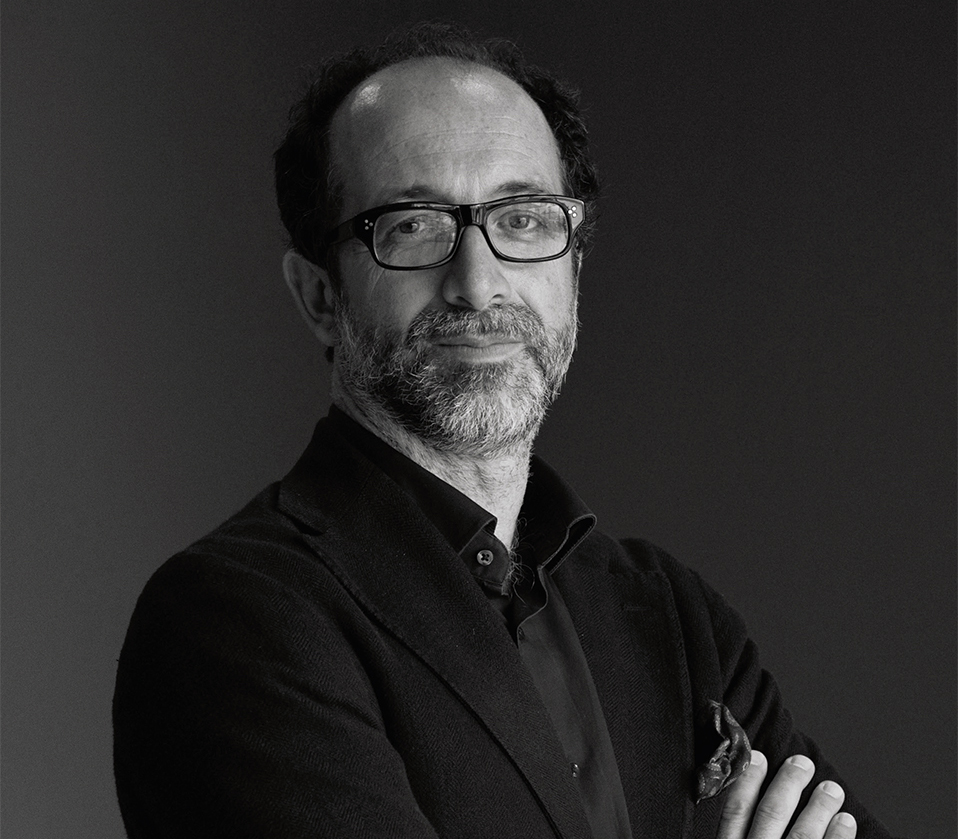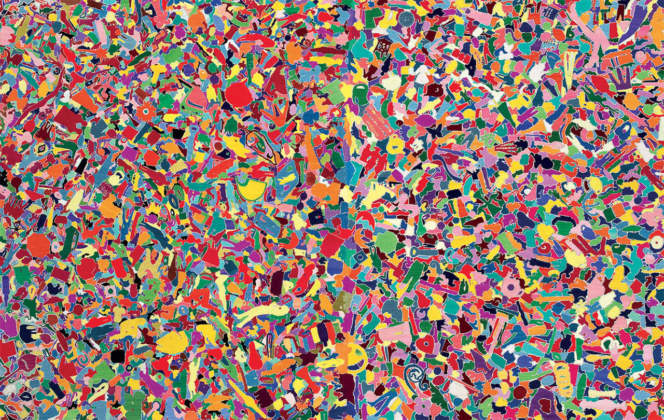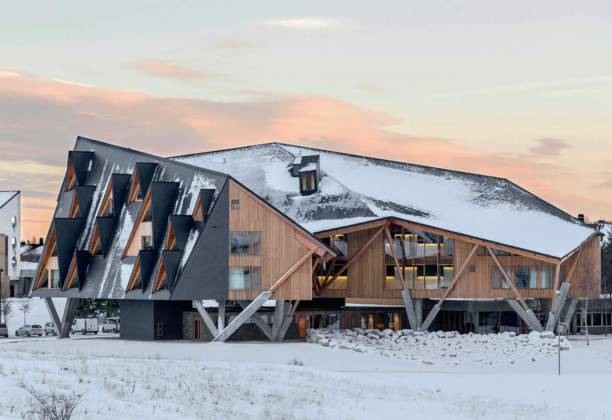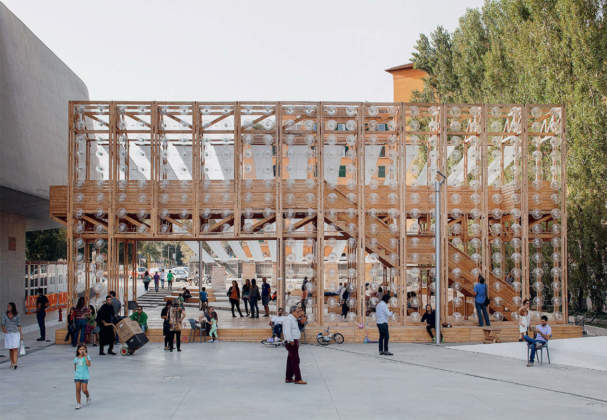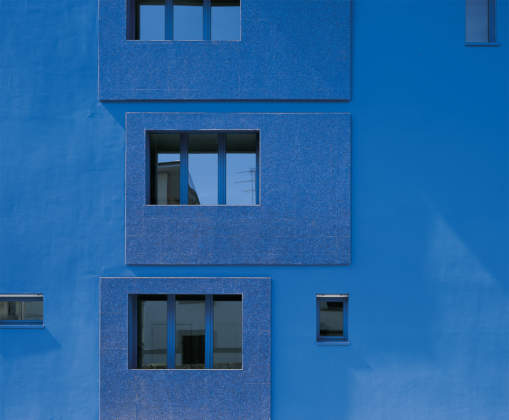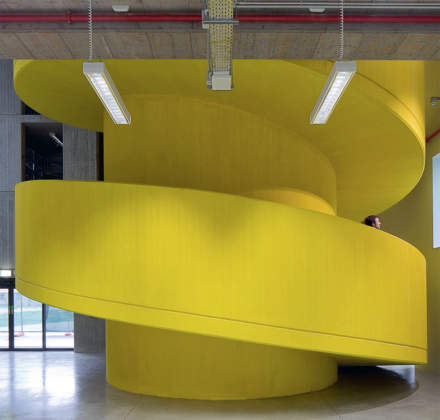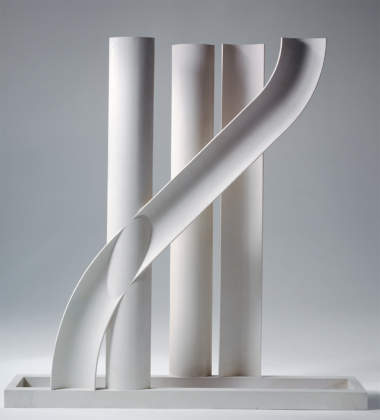If we were to answer a foreign friend about the recognisable symbols of Italian architecture of the last few years, I think we would have a few problems finding a plausible answer.
There is the Bosco Verticale (Vertical Wood) by Stefano Boeri, an abnormal icon that has made an impact on the collective and media imagery, as well as having created discussion also in the context of Italian and international architectural criticism.
The same could be said of the Antinori Wine Cellars by studio Archea, thanks to an interesting mix between a typically Italian domestic monumentalism and ability to adapt to such a structured and fragile landscape.
With some open parentheses, the “Nuvola” by Massimiliano and Doriana Fuksas, especially for the expectations of seeing the transformation of a model so fluid and different from the Italian context in a real building element. Important are a series of design strategies for reinforced concrete skeletons in the South of our country, joyfully brought to life by the couple Cherubino Gambardella and Simona Ottieri. Some original home interiors by Francesco Librizzi which have impressively gone viral on the global network. Renzo Piano who becomes a senator for life, the first architect to gain this position, and who uses his authority in favour of the civil centrality of architecture and the suburbs as the heart of one of the national problems to be tackled. The emergence of a mature profession through a series of urban works that are distinguished for their quality, as in the works of Piuarch, Park and Labics, Pietro Carlo Pellegrini, Piero Lissoni and 5 + 1AA.
The theoretical texts of Pier Vittorio Aureli, though generated in an international context linked more to the academic debate between London and New York. While San Rocco magazine, a result of a group of architects, curators and Italian artists who since 2010, has generated an ambitious critical project, giving voice to a new generation of authors capable of reinterpreting the problematic relationship between contemporary design and history.
And, to conclude, an infinite mass of designs, collages, photomontages that have invaded the Net, initially in an original way insofar as “captivating” theoretical signs, but subsequently becoming a genuine “stylistic” manner that does not seem familiar with a true evolution of meaning.
Except for Beniamino Servino and Luca Garofalo who in a series of recent publications have produced an original attempt to grow this phenomenon.
All this, not considering some (but not too many) major international works such as the MAXXI by Zaha Hadid, the Prada Foundation by Rem Koolhaas and Herzog & de Meuron‘s Fondazione Feltrinelli, which keep Italy in the circuit of “updated” nations.
Not much if we compare architecture with fashion, cinema, design, food economy, biotechnology or some of the most advanced and experimental production sectors in our country.
Everything, however, is in line with a generalised situation that sees the global architectural culture enveloped in a deep crisis of tools and content, due to a global metamorphosis that is producing innovative questions to which this discipline does not seem able to offer sufficient answers at this moment in time.
The last decade has experienced on the architectural landscape the progressive decline of the neo-monumental charge of an extreme form of International Style, symbolic materialisation of neo-liberal thought on a global scale, with the consequent flattening of differences and of every form of possible alternative short circuit. The 2008 financial crisis confirmed a state of profound unease that no one wanted to recognise, combined at the same time with a radical metamorphosis of our ways of living, transforming and interpreting the world around us. We are blind and helpless in the face of an epochal change that is undermining the foundations of modern Western thought, without being able to read the traces of the world that will welcome us in the coming decades. We are not dealing with a mere crisis but an epistemological rupture that as a consequence corresponds to the inability to appropriately use words and instruments, with respect to the phenomena we are going through.
This leads us to look at terms like “nation” and “identity” with somewhat circumspection, for the degree of symbolic contamination which they have been been subjected to in the last two centuries. While probably words such as “community”, “place”, “body”, “beauty”, “senses”, “ecosystem” and “post-metropolis” could possibly help us rethink architecture in a different and useful way in view of the scenarios that will be changing in the coming years. The big challenge is to overcome an antinomic dimension that has characterised global thinking in recent centuries: man-Nature, interior-exterior, public-private, city-countryside, home-street, real-digital, manual-technical, are just some of the rigidly binary thoughts that appear superseded by a reality that is changing very rapidly, offering new challenges to contemporary culture and the world of design, regardless of the latitudes of reference. What will allow architecture to continue to be considered a civilian art, useful and necessary beyond the individual authors‘ ability to give profound qualities to the spaces that will be created? What will enable an increasingly fluid, unstable, individualised community to recognise itself in architecture to the point of considering it a contemporary monument? These are universal questions upon which contemporary Italian architecture is also called to give original and surprising answers, leaving behind impalpable issues such as style or the momentary weight of sirens trying to convince us that architecture will evaporate forever in a rustle of leaves or tinkling of bits. I believe it is necessary to start from a premise that has always (alas) distinguished us from most other Western countries: modern architecture is a problem for the majority of Italian society. The Italian architectural culture, which in the last century has produced masterpieces of Mediterranean abstraction, works able to mediate between continuity, tradition and contemporaneity, radical visions capable of lightning-quick intuitions on the changing world, neo-rational and universal thoughts and monuments, has, nonetheless, remained the product of an elite that has rarely had the power to influence widely on the destinies of our territory, which, in the meantime has multiplied its built-up surface area by at least ten times. So it is not true that in Italy we do not build, but it is sadly clear that architecture, that of designers able to make a difference, has not had the strength and ability to make this discipline a socially recognised and appreciated fact. This condition, by contrast, goes hand in hand with another element represented by that cultural anomaly that only Italy has been able to process in the post-Second World War period, capable of bringing together the archaic and avant-garde, history and modernity, the figure of man and abstraction, detail and industry, design and vision, theory and the problematic. Between the end of the 1930s and 1980s, Italian architectural culture was one of the most sophisticated and original realities on the international scene thanks to a series of writings and visions that, despite its political and social difficulties, had the power to become universal thought, recognised and shared beyond our borders. The theoretical writings and the journals conceived by Giuseppe Pagano, Luigi Moretti, Ernesto Rogers, Gio Ponti, Bruno Zevi, Aldo Rossi, Vittorio Gregotti, Manfredo Tafuri, Giancarlo De Carlo, ALessandro Mendini, Ettore Sottsass, Franco Purini, Andrea Branzi, Paolo Portoghesi, Pier Luigi Nicolin and Marco De Michelis (just to remember the highest points) were an original viral point of reference in the international context, because they nourished on the anomaly of a country in fragile equilibrium between profound memory and imperfect modernity. By the end of the last century, the ideal charge of at least three generations of designers was gradually exhausted in a combination formed by the many self-referential ranks of the academy, which did not have the ability to feed other anomalies, and a country which has progressively normalised and become vulgar with twenty Berlusconian years of television. Responses during the 1990s were different, shifting between a necessary international update, renewal of key words and cultural horizons, rediscovery of the radical-situationalist matrix and digital excitement, without regenerating conditions of originality compared to the global context, but rather giving the feeling that Italy had become a hospitable province of the empire. Even the contemporary appeal to Critical Regionalism, Linus‘ comfortable blanket that has awakened our appeased desire for strapaese, evolved thanks to more evolved architectural languages (Portuguese, Spanish or Dutch), has only been able to update the constructive lexicon of the latest generation of buildings, without however generating an autonomous reflection capable of offering an original path to this transnational movement of domestication of modernity. One of the important merits of the work of the generation at the end of the century is to have shaken off the formalism of schools and baronets that were asphyxiating our universities, bringing a different wind, open to confronting technologically and socially more evolved realities, and flanked by that extraordinary Erasmus revolution which has been of fundamental importance in Italy. The individual and joint action of Mirko Zardini, Stefano Boeri, Francesco Garofalo, Mario Lupano and Pippo Ciorra has had a profound effect on the cultural repositioning of our Country and on the definition of new slogans that have marked the latest generation of designers. At the same time, the theoretical and design work of Cherubino Gambardella, Carmen Andriani, Aldo Aymonino and Alberto Ferlenga has sought to redefine the characters of a necessary continuity-rupture with the culture of the project within the academy, reflecting critically on the profound contents of a tradition of Italian modernity and ferrying them towards a new phase, in search of a different identity. This widespread phenomenon of laborious re-discussion of the characteristics in the Italian project, has also had the strength to bring back new Italian professionalism into a different sphere and to look at this world as a central resource to promote widespread quality, desperately needed by our cities. There are few countries like Italy that can boast a linguistic diversity and design experiences so rich and varied to make the country recognisable since the beginning of this new century, a country which continues to grow, generation after generation. It is undeniable that the average quality of built-up areas in our cities has improved over the last two decades, but such is the damage and the devastating territorial consumption that occurred earlier, as to make this perception unrealistic. The architecture generally appears better thought out and designed, with a significant urban concept and linguistically up-to-date, but still overwhelmed by the need to be accepted by an unimaginative real estate market and by public administrations without visions or strategies. So this gluten-free wave of architecture is not enough to bring us back to a different condition. Perhaps it has come late from the point of view of historical perception and from the fact that we have to tackle a building heritage fulfilled in the last fifty years, increasingly obsolete and cumbersome, as well as there being other priorities that our architecture has to observe. Due to the complexity of structural problems (obsolete public building heritage, infrastructures to re-design, environmental fragility, aging of the population), the co-presence of a partially passé manufacturing sector and the most advanced technical craftsmanship, geographical position in the heart of the Mediterranean chessboard, weakness of a social framework dominated by fears, resistance, generational depletion, lack of political vision with regards to the future, the increasingly evident rupture between North and South, Italy continues to be potentially a country of experimentation, to which our architecture could also offer alternative visions and strategies for the development of potential scenarios. With this, I do not allude to the search for new “Italian” styles and languages, nor to the definition of identifying content that often appears to be more a result of a melancholic past than the elaboration of visions for the foreseeable future, as well as a change of cultural attitude and the ability to deal with these paradoxical abnormalities as leverage from which to rethink structurally.
This issue of Area wants to be the first of a series of “Italian Stories”, small and big, past and future, that help us interpret the riches present in our country as well as some of the possible scenarios with which the Italian architectural culture should become familiar with, in order to question the future of our discipline and its social, productive and cultural potential. These are experiences that still believe in the relationship between theoretical thinking, the design of form as profound content, a building site as a laboratory and relationship with industry as an opportunity of experimentation, all elements that have always characterised the substance of Italian anomaly and its structural and symbolic relationship with Europe and the Mediterranean. We have now entered a historic phase in which the drastic limit on territorial consumption will oblige architecture to think of its social and political role in a drastically different way compared to previous centuries.
The vision of reality as a complex eco-system is one of the keys to bringing architecture back into the hive of a society that perceives the quality of life as an inevitable centre for the future. For these reasons, Renzo Piano‘s work on the periphery as a place of re-stitching, the recent projects by Mario Cucinella or the futuristic provocations of Carlo Ratti have had so much public emphasis, because they strike the heart of fears and desires of a more transversal social body, becoming technical, poetic, theoretical and political thought. This is important in conjunction with a cultural heritage of Italian and European architecture, represented by the urban concept of the project and the vision of the building as a “city-like townhouse”. The ability to produce urban thought even in a simple home interior or to perceive architecture as a more complex, living fragment that injects the richness and heterogeneity of the urban environment, is another characteristic that needs to be constantly re-thought, especially in a historical phase that will increasingly bring up the theme of densification of the existent. That median line that systematises Villa Adriana, the ducal palaces of Urbino and Mantua with the insights of Giancarlo De Carlo for the University Colleges of Urbino, the agronomic visions of Archizoom and Andrea Branzi with the extreme imaginations of Baukhu, 2 a + p e Dogma, Pienza towards the old town of Terni by Ridolfi and Archea‘s re-stitching of the urban fabric, or the recent project for the BNL in Rome by 5 + 1AA, show an architectural, town-planning genius on a 1:500 scale that maintains the strength of the Italian project.
Along with all this, however, our architecture should retrieve the taste and boldness of pinch, the sudden scrap that spooks and disorients, the change in point of view and intuition scratching on the surface of the future. This necessary normalisation has led to a formal castration of spaces, which is instead one of the forces of universal architecture. The world to come will certainly need fewer new works, no need for superfluous authoritarian narcissisms, but rather work that can slow our pace, welcome us unexpectedly and let us reflect on the power that can have a well-thought out space and that has the power to awaken that absolute necessity to transform a single building into a shared monument.
The arch of S. Andrea di Leon Battista Alberti, the esedra of Villa Giulia or the Sala dei Giganti by Giulio Romano, the circular court of Caprarola, the vertiginous geometries of Borromini and Guarino Guarini, Sanfelice‘s domestic and monumental stairs, Antonelli‘s “follies” and the sensual curves of Mollino, the Casa del Fascio by Terragni and the imperfect forms of Moretti, the micro-monuments of Scarpa and Albino‘s inner Genoa, Aldo Rossi‘s Modena Cemetery, and BBPR‘s Torre Velasca, have pushed designers such as Italo Rota, Renato Rizzi, Pietro Carlo Pellegrini, Cherubino Gambardella, Elastico by Stefano Pujatti, Vincenzo Latina and Marco Navarra, to conceive and create imperfect, disturbing objects, necessary for the deep soul of every place. One last scenario is represented by what Mario Lupano defined several years ago “Lo-Fi”, indicating the need for architecture not to be aggressive, capable of combining digital technology, abstract thinking and traditions in a contemporary way, with a low budget, and working on the underlings continually offered to us by reality. This definition seems perfectly overlapped by the work and methodology applied intelligently by the latest generation of Italian designers, who are finding an interesting balance between practice of representation and design in reality, despite the risk of post-radicalist manierism that may impoverish some of this research. The results are surprising for aesthetic finesse, almost impalpable for the scale they are forced to confront, silent to the point of risking appearing invisible but not because this, without personality. On the contrary. This is united with a capacity of social empathy and the ability to build bottom-up project experiences, able to engage fluid communities and systematise. Recent works by Al.Bo.Ri., Francesco Librizzi, Walter Scelsi, Laboratorio Permanente, Diverserighe studio, SET architect, Fosbury architecture, Orizzontale, Parasite 2.0, Supervoid, are to be followed attentively because they tell of an important metamorphosis in creating architecture today, not only the derivation of the crisis but of a cultural breakthrough.
We have entered a historical phase in which architecture calls for the ambition of new forms of critical and theoretical thinking: political in its way of going against the commonplace and formalist flattening, radical in the ways of thinking, generous towards the realities that surround us, disturbing for the ability to create forms of original and vital empathy.
And all this has to start from the Schools of Architecture which we ask to go back to producing theory and vision, experimentation and dialogue with the most innovative national and transnational organisations in order to start building generations of different designers, able to look differently at the world and to offer solutions for our anthropic landscapes where there is an urgent need.
area 155
| italian stories architecture between portrait and self-portrait


